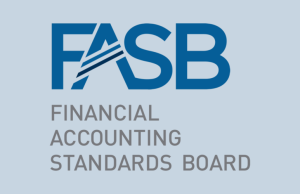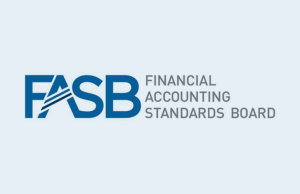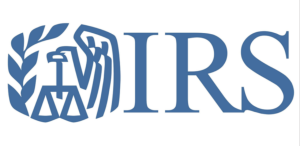Scale + Standardization = Savings
Streetsmart nonprofit managers are looking for savings everywhere, for all the obvious reasons. No type of spending is likely to escape at least momentary attention, and many managers are poring over cost reports looking for increasingly elusive opportunities to reduce spending.
From this effort has grown an interest in purchasing economies. It’s a natural direction to try to save money on transactions involving products and services provided by outsiders because the approach has the dual benefit of saving money without threatening jobs.
Simply seeking savings that meet these criteria is not an easy task, especially in a field that rarely overspends on any line item in the budget. Wise managers will approach the task with every possible conceptual tool. The twin ideas of scale and standardization can be one of those tools.
Scale
Scale refers to the implicit relationship between volume of outputs and the associated costs of obtaining those outputs. The word is perhaps most familiar as the second half of the ever-more-familiar phrase “economies of scale.”
The common instinctual formula for scale-based savings lies in the simple premise that purchasing more quantities of an item eventually results in a lower cost per item. That general notion is true, but the pathways to savings are not always clear-cut or reliable. The simplest expectation for scaled quantities vs. cost would be graphed as a clean, linear relationship. Yet many goods and services do not fit that model at all.
Take health insurance, for example. Health insurers need to deal with two types of risk when they insure a given population. The first kind is that the total amount of health claims from the group might be greater than was originally projected.
The second is that any one claim might exceed the projected maximum by a considerable amount even if the overall level of claims is otherwise not extraordinary. The latter can occur, for example, when a baby is born severely prematurely and needs extensive medical care in the first few weeks and months of its life.
Health insurers would prefer to cluster together enough people that the laws of probability would kick in and both categories of risk would be reduced accordingly. But the real world of employer-based health insurance practically demands that each group of employees be treated as a stand-alone entity.

Therefore, only the very large employers will offer the possibility that the risks will be spread evenly — and even then there is always the concern that groups of employees will somehow be skewed in one direction or another because of the nature of the work or the requirements of the employer. As a result, health insurance costs are rarely susceptible to cost savings until insurers think they can cover those two risk categories.
The second aspect of scale in purchasing for nonprofits is that the single largest category of spending is almost always personnel, and that all other kinds of spending is often spread out among dozens of other things. Take away personnel spending and even nonprofits with revenues of $5 million or $10 million will find that the maximum amount of spending they do on everything else is no more than $3 million or $4 million — and most likely less than that. And, the scale for any one of those items could be small.
This leads to the third aspect of scale in nonprofit purchasing. Except for the very largest of nonprofits, such as universities and hospitals, achieving desired levels of scale in purchasing will always require collaboration.
Standardization
If the need for scale in purchasing is clear, the need for standardization in cost savings is positively buried.
Standardization is really the enabling element of large scale purchasing. The key to understanding the impact of common standards is that it relates more to underlying practices than it does to the purchased items.
To illustrate this point, go back to the health insurance example and assume it would be possible to assemble 10,000 nonprofit employees of many different employers into a single unit for the purpose of buying health insurance. The insurer would then have a scale of purchasing that would certainly be attractive. In turn, the participating nonprofits might be able to substantially save.
However, health insurance is highly subject to behavioral choices. Suppose that the plan served only organizations with the same general employee profile. If the groups were unusually healthy, the similarities would be beneficial to all. But if the reverse were true, the laws of probability would work against the plan because there would be no way to smooth out the two risks noted earlier.
Consider the impact of a hypothetical collaboration representing 10,000 employee computer users from many different nonprofit employers. In addition to the inevitable split between Microsoft and Apple users, there would be variations in the most desirable computer features, the amount of technical support necessary, and the desired price points. With each preference that is accommodated, the effective scale of the purchases — and therefore the possibility of producing significant savings — would be reduced.
The Implications
The best cost-reduction efforts standardize and then scale. To be sure, this is not an easy combination. But, the economics of purchasing demand it.
The interplay between scale and standardization produces an iron calculus that determines savings. There are other benefits in this area beyond sheer expense reduction that are not as unbending. In particular, there could be qualitative savings, or savings that are not easily expressed in dollar terms.
What if a cost reduction effort yielded few outright monetary savings but saved the CEO four hours per week? What if that individual put those hours fully into fundraising activities? The payoff could be many times the value of the individual’s saved time, but it will appear nowhere in an accounting ledger.
Both kinds of savings are legitimate and often possible, with the right kind of planning. The choice is yours.
Thomas A. McLaughlin is founder of the nonprofit-oriented consulting firm McLaughlin & Associates. He is author of “Streetsmart Financial Basics,” published by Wiley. His email is [email protected]









